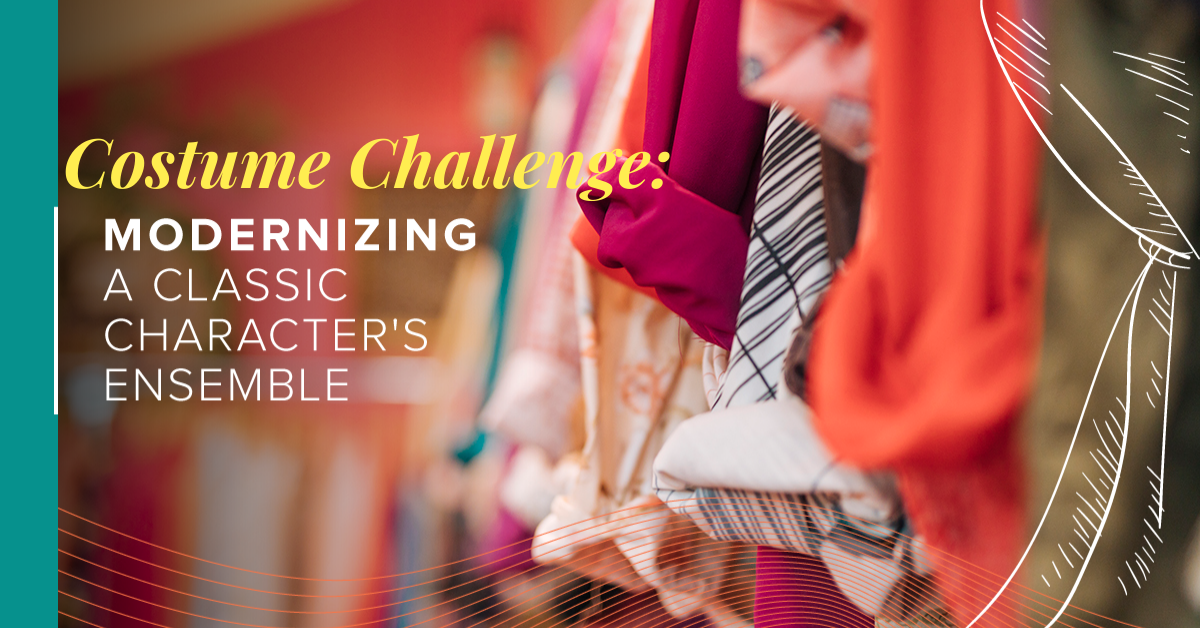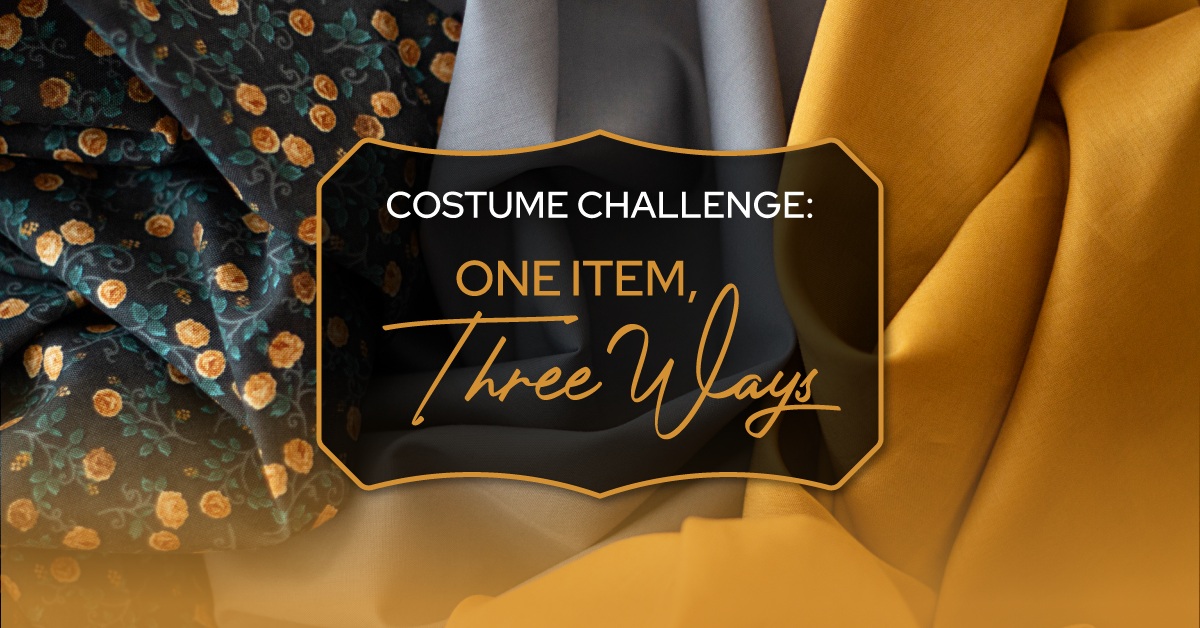Agatha Rex by Lindsay Price is a bold high school take on Antigone - packed with heart, conflict, and a powerhouse ensemble. One girl. One stand. One huge risk. *NEW COMPETITION VERSION AVAILABLE!*
Costume Challenge: Modernizing a Classic Character’s Ensemble
The following exercise challenges students to take on the role of costume designer and come up with a modern look for a character from a different era. Students will learn about the character and the time period in which they lived to create a modern ensemble inspired by the traditional looks of the era. This exercise can be done individually or in pairs, and adapted for distance learning.
Materials Needed:
- Sketch paper and pencil
- Colouring tools – pencil crayons, markers, or paints
- Fashion magazines/catalogues
- Scissors
- Glue or tape
- Box of various fabric scraps, buttons, trims, etc.
- Computer with Internet access and colour printer
- Poster board or binder with plastic page protectors
Instructions:
1. Select a character and get to know them.
Select a character from a play to design a costume for. The play must be set in a different era. Shakespearean plays and classic Greek theatre plays immediately jump to mind, but there are plenty of shows that would be applicable. Read the script and get to know the chosen character. Are there any descriptions in the text about what the character wears? What does the character do in the show that might give an idea of what they need or choose to wear? How old are they? What is their job or social status? What time of year is the play set in?
Write a short biography (5-8 points) about the character that would help a costume designer think of what they would wear.
2. Research Part 1.
Identify the time period that the play is set in. Learn about the traditional fashions of the era. For example, in Greek theatre, actors wear draped fabrics and masks. The style of the Renaissance era was short puffed pants with high socks, neck ruffs, and various hats, often with a feather as decoration.
Create a brief written description of the clothing worn, and choose 3-5 images (such as printouts from the internet, photocopies from books, tear outs from magazines) to illustrate the clothing. Note interesting and important details that are characteristic of the era, such as fabric (types, colours, fit – tight or loose), trim (buttons, ribbons, lace, jewels – or lack thereof), or accessories (hats, belts, shoes, gloves, jewelry, masks).
3. Research Part 2.
Look up images of past productions of the selected play, and focus on the chosen character. Look for “traditional” costume interpretations of the selected character that reflect the fashions of the era that students learned about in the previous step.
Choose 3-5 images to represent the traditional costume interpretation of the selected character, and create a brief written description noting those particular aspects of the costumes.
4. Research Part 3.
Now it’s time to get modern! Search through fashion magazines and catalogues (both print and online) and look for details in modern fashion looks that are reminiscent of historical fashions. Maybe a Prada jacket with a fancy collar is reminiscent of an Elizabethan neck ruff, or a Gucci gown has a similar shape to an Edwardian dress. It doesn’t have to be only high fashion – perhaps a celebrity photo shoot from Teen Vogue or an image of an athlete in a suit in Sports Illustrated might inspire students.
Choose 3-5 inspirational images to be the basis for the costume design. Be sure to indicate in a written description the specific details of the modern fashions that are reminiscent of the outfits of the past era.
5. Design.
Students will create an original sketch of their character’s modern costume. Students who aren’t the most confident artists can do a search for “design figure template.” Students will draw and colour the costume.
Have students indicate and label on the sketch important details such as types of fabric, trims, notions, accessories, and shoes. Include physical pieces such as fabric swatches, or a sample button, ribbon, or trim. Note how the modern costume elements relate to the fashion of the original time, as well as how the modern costume serves the character and their needs/wants/job/social status.
6. Present.
Students will collect their written pieces, images, sketch, and extra pieces, and either attach them to a poster board or assemble them into a binder with plastic page protectors. Students will present their costume design to the class.
Distance learning alternatives:
- Gather students on zoom and have them present their costumes.
- Students can create a digital poster board and submit them.
- Students can video their sketches and narrate their choices. No need for a camera; they can use their phones.
7. Reflect.
Students will complete and submit a reflection, found below.



